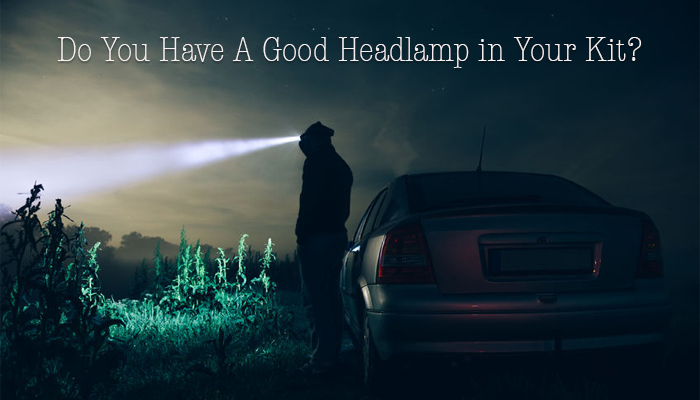
One of the biggest benefits of using a headlamp is that you still have both hands free and a light that essentially moves with your eyes. A headlamp is ideal for walking in the dark, so it is a must for hikers and campers. Even if you expect to be back by dark, be prepared for the dark, in the event you get lost or stranded.
There are cheap lights that are just a few bucks at a retail store, or you can step up and pay close to 50 dollars for a quality one with numerous functions to include a red light to help preserve night vision.
Before we go any further, however, let’s clear up some myths about red lights and night vision. The human eye does have a chemical within it that helps us see at night. However, we do not have the same capabilities as some other mammals do, we simply do not have the physical attributes that allow us to see as well in the dark as some mammals.
Nature at some point decided we didn’t need any fancy accessories to see at night, because of our advanced brainpower. We learned to light up the dark, and so, no need to burden us with extra features.
Rhodopsin is the chemical within the rods in our eyes that helps us see in the dark without artificial light. Rhodopsin reacts to bright light by closing off to protect the eyes from the intense light. However, this ruins our night vision for up to 30 minutes in some cases. The chemical bleaches out color, which helps us see in the dark, but again the chemical when exposed to light shuts down the ability to see in the dark, because the eye is protecting itself from intense light.
The eye’s reaction to a red, or even blue or green light at low intensity is less severe, thus, not doing as much damage to your night vision. With that being said, if the red, green, or blue light is intense enough it will ruin your night vision.
Low-intensity red light allows you to read maps, check your watch and do close up work without shutting down your vision for 30 minutes. The low-intensity light will light up a pathway or trail to some extent as well. Having a red light on your headlamp can help prevent your light from being spotted by others if you are in evasion mode, as well.
Anyone that ventures outdoors at night will benefit from a headlamp and those hiking or camping or in a survival situation, in particular, may find that a good headlamp can save your life.
What to Look For
Water resistance is important. You don’t want rain to disable your light because a dark rainy night is not the time to lose your ability to see.
Strobe setting for red and white lighting, because the strobe setting can be used for signaling others in your party so you do not have to break radio silence or used to signal for help, or to alert others to danger if your car breaks down or to warn against trail hazards.
Several white light intensity settings, because you may need a spotlight for some tasks at night.
You need one with an easily adjustable and quality strap. You may need to run with the light on your head, and so, you want one that can be adjusted quickly on the fly to hold it in place for rough conditions.
Choose wisely, and having an extra light in your bag is a good idea, as well as, extra batteries and/or the means to recharge chargeable batteries.
A headlamp will certainly make vehicle or equipment repairs easier at night as well as other tasks around the house or camp to include cooking in the dark, fire starting, walking in the dark, applying first aid and a host of other tasks that require both hands and a good light.